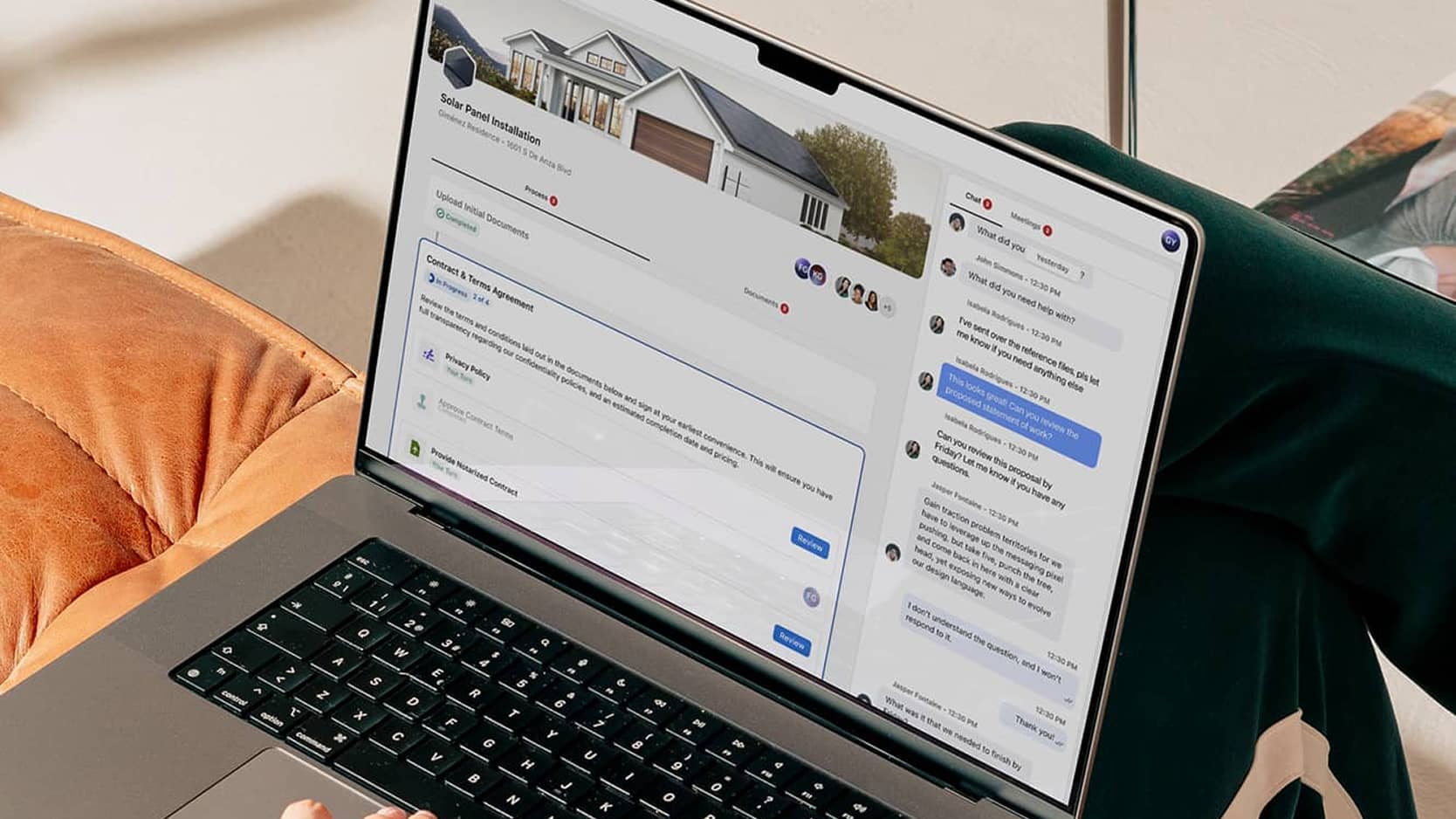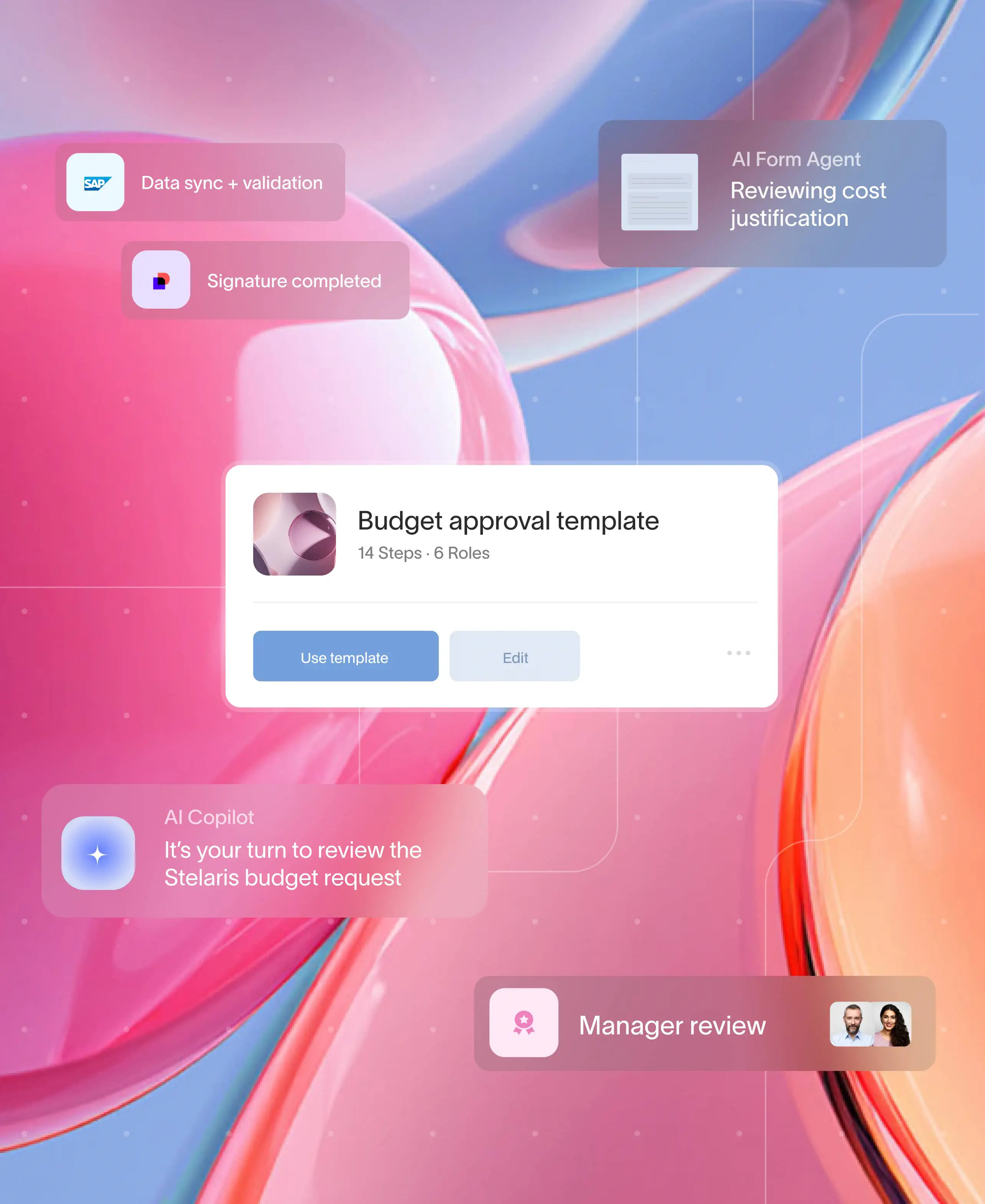
At a glance
High adoption rates for a client portal: No-code portals succeed when they're designed around how your clients actually work, not generic templates.
Clear value proposition: Clients embrace portals that solve real problems — streamlined onboarding, faster approvals, or centralized communication.
Seamless integration: When portals connect to your existing systems, clients get a unified experience instead of juggling multiple tools.
Real business impact: Companies like Salty Air Living scaled 5× after creating a portal that clients genuinely prefer over email and phone calls.
Start with the business process, not the software
Before you choose a platform or start configuring workflows with no code tools, be clear about what the portal will accomplish for both you and your customers. A no-code customer portal is essentially a blank canvas — the real value emerges from designing it around processes that genuinely matter to your business outcomes.
The most successful implementations focus on solving specific pain points rather than just digitizing existing workflows. Consider how your current client interactions create friction, where information gets lost in email chains, or which approval processes cause the most delays.
Process-focused examples with advanced features:
Legal firms might centralize client intake forms, case document sharing, and secure signature collection while maintaining detailed audit trails for compliance.
Financial institutions often build portals around loan applications, multi-stage approvals, and secure document exchange with automated compliance checkpoints.
Marketing agencies typically focus on centralizing project briefs, creative feedback loops, and final asset delivery with version control and approval tracking.
The right platform with drag and drop functionality ll let you adapt to any of these scenarios without writing code, while maintaining the sophisticated workflow logic your business requires.
Define the customer journey you want to create
Map out the complete interaction from initial engagement to project completion. This isn't just about listing steps — it's about understanding the emotional journey and decision points your clients experience.
Critical journey mapping questions:
Where do clients first engage? This might be after a sales win, contract signature, initial consultation, or service request submission.
What value exchanges happen throughout, including custom forms ? Document collection, approvals, payments, status updates, deliverable reviews, and feedback incorporation.
What do you want them to feel at each stage? Confident about progress, informed about next steps, and empowered to take action without chasing you for updates.
Where do handoffs occur? Between your internal teams, external stakeholders, or different service phases.
Understanding these dynamics helps you design workflows that feel intuitive rather than bureaucratic. The goal is creating a process that clients actively want to engage with rather than something they endure.
Choose a no-code platform built for business complexity
Once your process requirements are clear, select a platform that can handle sophisticated business logic without requiring constant developer intervention. This is where many teams make costly mistakes by choosing solutions designed for solo freelancers when they need robust capabilities that can scale with their business.
Essential platform capabilities:
Workflow flexibility: The ability to add, modify, and remove steps as your business evolves, including conditional logic, parallel processing, and exception handling.
Security and compliance with enterprise grade security : Business-grade data protection, role-based access controls, audit logging, and industry-specific compliance features like SOC 2 or HIPAA certification.
Integration ecosystem: Deep connections with your CRM, payment systems, document management tools, and other business-critical applications. Workflow automation platforms should enhance your existing tech stack rather than creating isolated systems.
Brand consistency: White-label capabilities, custom domains, and the ability to embed portal functionality directly into your existing client-facing systems.
Mobile-first design: Native mobile experiences that work seamlessly across devices, not just responsive web interfaces.
This approach ensures your portal becomes the natural hub for client relationships rather than another tool that creates more complexity.
Start with templates but customize for your specific needs
Quality platforms provide sophisticated workflow templates that go beyond basic form collection. These templates should serve as starting points for complex business processes rather than simple contact forms.
Look for templates that include multi-stage approvals, conditional branching based on client responses, automated escalation paths, and integration hooks for your existing systems. The key is finding templates that match your industry's regulatory requirements and business complexity.
Template customization strategy:
Start with the template that most closely matches your process structure, then systematically adapt each component. Rename workflow stages to match your terminology, add industry-specific compliance checkpoints, remove unnecessary steps that don't add value, and configure automation rules that reflect your business logic.
Falconi Consulting exemplifies this approach — they started with a multi-approval template and customized it for their due diligence process, incorporating regulatory compliance checkpoints and automated escalation rules, ultimately cutting project timelines by 40%. Their success demonstrates how workflow automation can be rapidly deployed when built on solid foundations.
Test with real scenarios, not hypothetical cases
Rather than running generic tests, validate your portal using actual client processes from start to finish. This reveals issues that theoretical testing might miss and helps you understand how the portal performs under real-world conditions.
Comprehensive testing approach:
Process stress testing: Run through complete workflows with realistic data volumes, multiple stakeholders, and various approval scenarios to identify bottlenecks.
User experience validation: Test with actual clients or internal team members who represent your user base, focusing on intuitive navigation and clear task progression.
Integration verification for sensitive information : Ensure data flows correctly between your portal and existing systems, including edge cases like failed API calls or system timeouts.
Mobile experience testing: Verify that all critical functions work seamlessly on mobile devices, as many clients will primarily interact through their phones.
Security and compliance checking: Validate that sensitive data handling, user permissions, and audit trails meet your industry requirements.
This thorough testing approach helps identify refinement opportunities before full deployment and builds confidence in your portal's reliability.
Deploy gradually and iterate based on real usage
Launch your portal with a subset of clients or a specific service offering rather than attempting a complete business transformation immediately. This controlled rollout allows you to refine processes based on actual usage patterns and client feedback.
Strategic deployment phases:
Pilot phase: Launch with your most collaborative clients who are willing to provide detailed feedback and work through any initial adjustments.
Refinement phase: Use data from the pilot to optimize workflows, improve user experience, and address any technical integration issues.
Scaled deployment: Gradually expand to additional client segments and service offerings, applying lessons learned from earlier phases.
The beauty of no-code platforms and other no code tools lies in their adaptability. As your business evolves — new services, different approval chains, updated compliance requirements, or expanded team structures — changes can be implemented in hours rather than months.
Salty Air Living demonstrates this scalability perfectly. They started with a basic onboarding portal and gradually expanded it to handle their entire client lifecycle, ultimately scaling from barely managing paperwork to handling 5× more deals. Their success shows how ready-to-scale workflow templates can support rapid business expansion.
Getting started with your portal build
Building a custom client portal isn't about replacing human interaction — it's about creating a structured, efficient environment where meaningful collaboration can happen. The most successful portals feel like natural extensions of your existing client relationships rather than barriers to communication.
Start by identifying one specific client process that currently creates friction or requires significant manual coordination. Focus on making that single process dramatically better rather than trying to digitize everything at once.
When evaluating platforms, prioritize those built for business complexity rather than simple task management. Your clients deserve portal experiences that match the sophistication of your services, and your team needs tools that can evolve with your business requirements.
Ready to see how a professional-grade portal could transform your client processes? Book a demo to explore what's possible for your business.
Frequently asked questions
Will my team need technical training to manage the portal? Quality no-code platforms are designed for business users, not just IT teams. If you can map out your current process and understand your client journey, you can configure and maintain workflows. However, ensure your chosen platform offers robust training resources and support for more complex customizations as your needs evolve.
How do I ensure clients will actually adopt the new portal? Adoption success depends primarily on user experience and how user friendly the clear value proposition is. Focus on making the portal genuinely easier than your current process — fewer emails, clearer status updates, and mobile accessibility. Implement gradual rollouts starting with clients who already collaborate heavily with your team, and provide clear communication about how the portal improves their experience.
Can these portals handle complex regulatory and compliance requirements? Yes, but platform selection for a basic client portal is critical. Professional-grade solutions include built-in compliance features, detailed audit trails, and configurable approval workflows that can enforce regulatory requirements automatically. Digital workflow automation in regulated industries requires platforms specifically designed for compliance rather than simple task management tools.
What happens if we outgrow our initial portal setup? Well-designed no-code platforms are built for scalability. You should be able to add new workflow stages, integrate additional systems, expand user permissions, and customize branding without rebuilding your entire portal. The key is choosing a platform architecture that grows with your business rather than one you'll need to replace as you scale.





